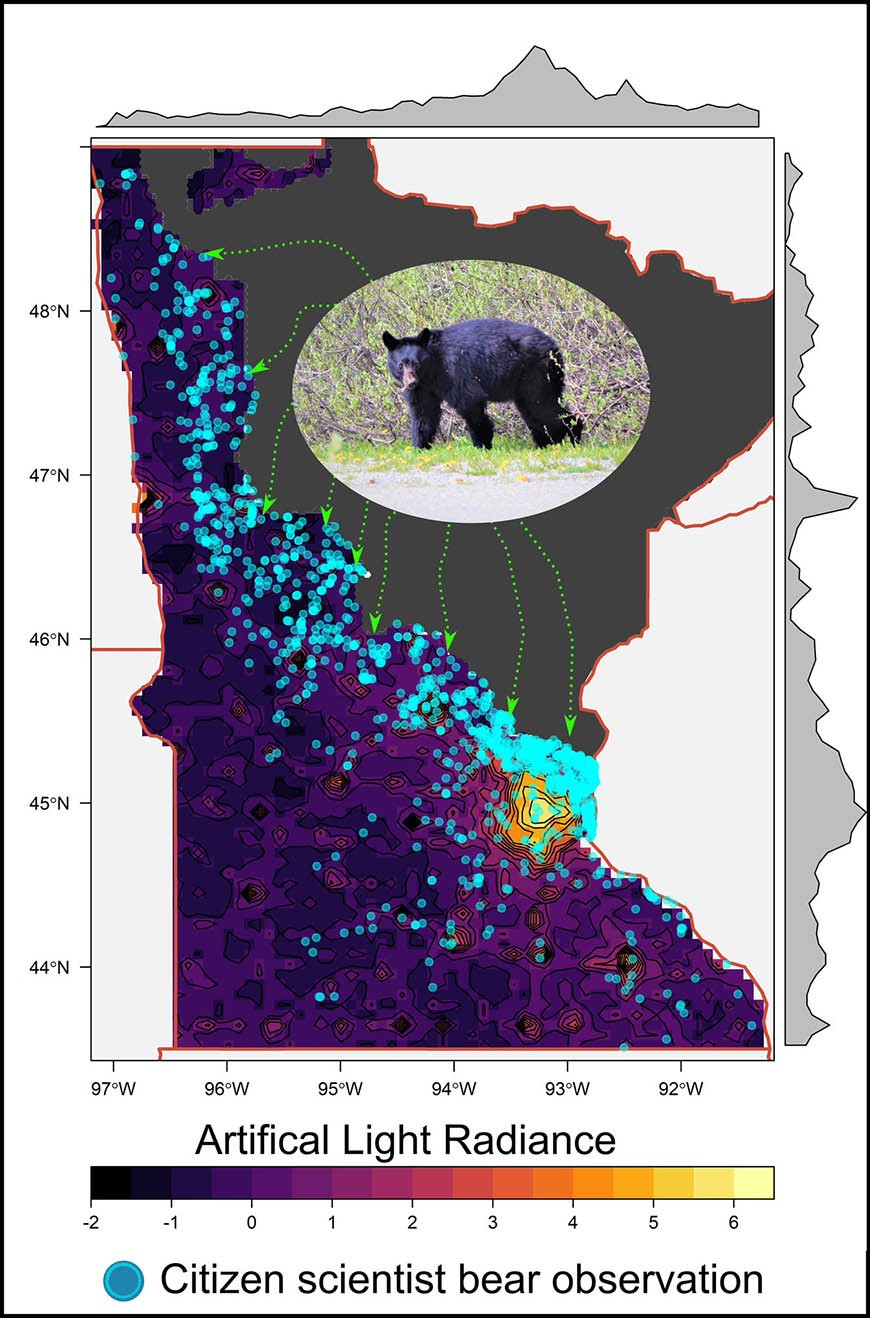
 back to all news
back to all news
Artificial night light helps account for observer bias in wildlife conservation efforts

In their paper, “Artificial night light helps account for observer bias in citizen science monitoring of an expanding large mammal population,” published in the Journal of Animal Ecology (Sept. 7, 2020), Assistant Professor Neil Carter and fellow researchers demonstrated that artificial light at night (ALAN) can impact citizen-science data.
The research team collected observations of American black bears outside their primary range in Minnesota, USA, as part of a study to gauge population expansion. Participants from the public (citizen scientists) provided sighting locations of bears on a website. The team then used an occupancy modelling framework to determine how well ALAN accounted for the location of those sightings—compared to other commonly used metrics such as housing density.
The researchers found that the highest counts of bear sightings occurred in the highly illuminated suburbs of the Minneapolis‐St. Paul metropolitan region, though the bear population in another region with plentiful natural cover and low ALAN was estimated to be substantially higher. The ALAN data, Carter notes, was based upon NASA satellite-based measures.
Of special note: While the team was working on the paper, lead author Dr. Mark Ditmer was a postdoctoral researcher advised by Carter at SEAS.
The study, which underscores the importance of considering ALAN radiance when analyzing citizen scientist‐collected data, also highlights the ways that ALAN data provides a dynamic snapshot of human activity. The authors note that their findings may help to inform—and improve—future wildlife conservation efforts.
Learn more in the Journal of Animal Ecology.

